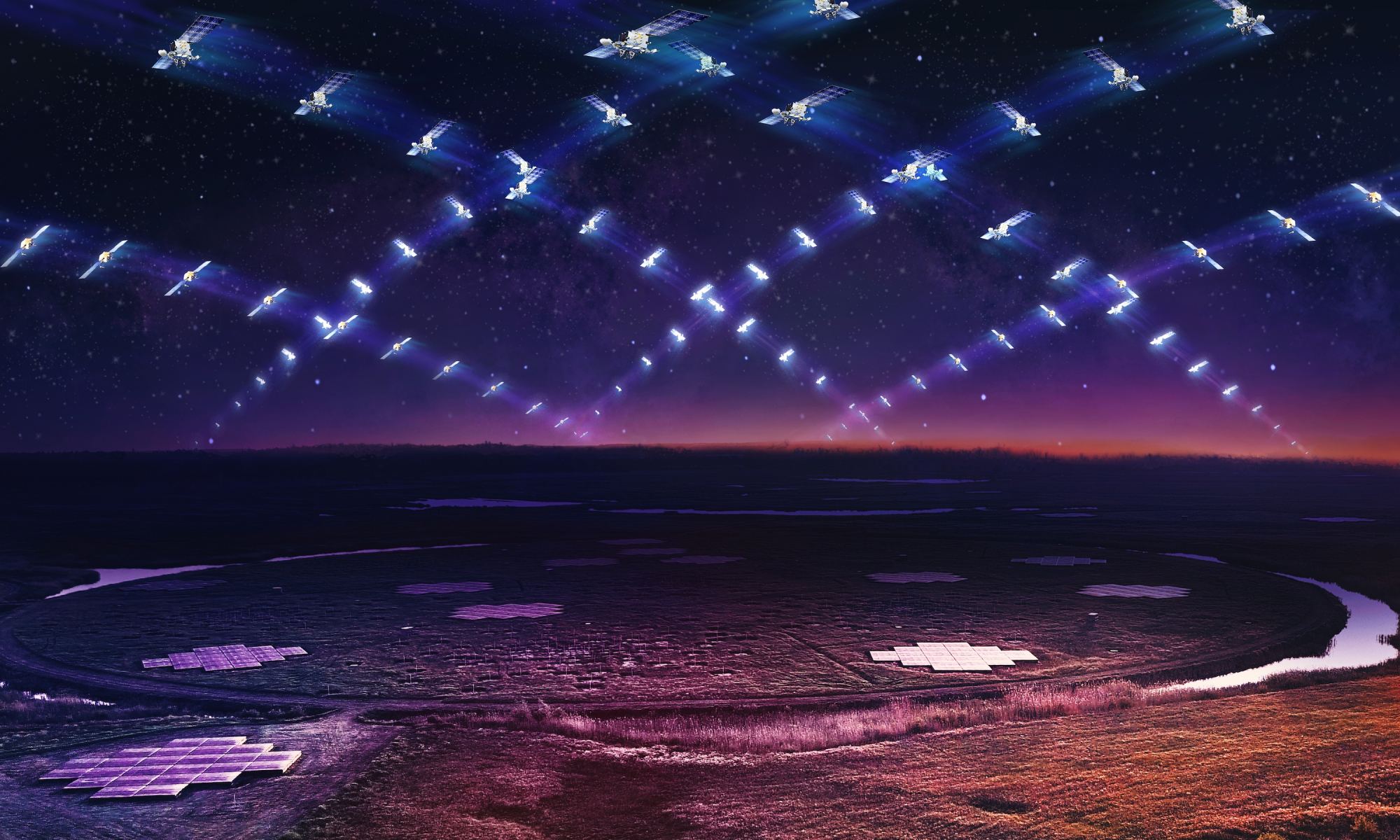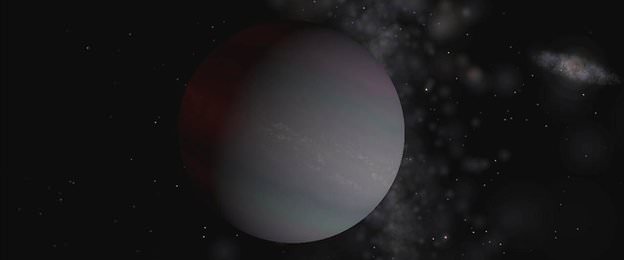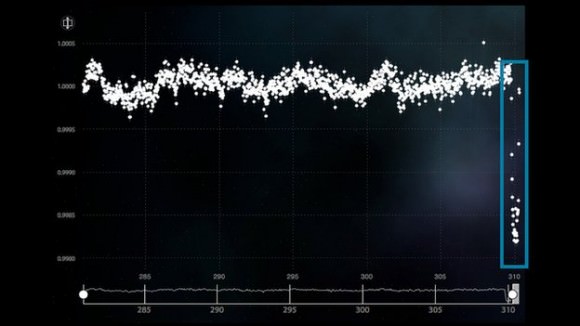Global internet access does seem like a worthy enterprise yet the rise of satellite megaconstellations there is a danger of the night sky becoming ruined. Astronomers the world over are keeping an eye on the impact these satellites are having on the night sky. Until recently the concerns have been relating to the reflection of visible light against the sky hindering night time observations. A recent study shows that the second-generation Starlink satellites leak 32 times the radio signal than the previous models. Are their presence putting at risk the radio sky now too?
Continue reading “Second Generation Starlinks are 32 Times Brighter in Radio Wavelengths”Building a Worldwide Map of Light Pollution
As someone that has always lived in the UK countryside I am no stranger to the glory of a dark star-filled sky. Sadly 60% of the world’s population has already lost access to the night sky thanks to light pollution. Across Europe and the US that number climbs to nearer 80%. A team of researchers want to try and track the growth of light pollution and to that end have developed an inexpensive sensor made from “off-the-shelf” parts. Their hope is that people around the world will build and install these sensors to share their data enabling them to track the spread of light pollution. If you’ve got technical skills, this could be a fun project.
Continue reading “Building a Worldwide Map of Light Pollution”Light Pollution is Obscuring the Night Sky. RIP Stargazing

A citizen science initiative called Globe at Night has some sobering news for humanity. Our artificial light is drowning out the night sky for more and more people. And it’s happening more rapidly than thought.
Continue reading “Light Pollution is Obscuring the Night Sky. RIP Stargazing”New Zealand just got its first International Dark Sky Park

As light pollution around the world increases, we are losing our access to the night sky. Thankfully, dark sky preserves and parks do exactly what their names suggest – preserve the night sky as our ancestors knew it. And recently, the Wai-iti Recreational Reserve and Tunnicliff Forest has been accredited, offering stargazers in New Zealand unprecedented views of the heavens above.
Continue reading “New Zealand just got its first International Dark Sky Park”Finally! We’ve got a comet that’s visible to the unaided eye. Comet C/2020 F3 NEOWISE
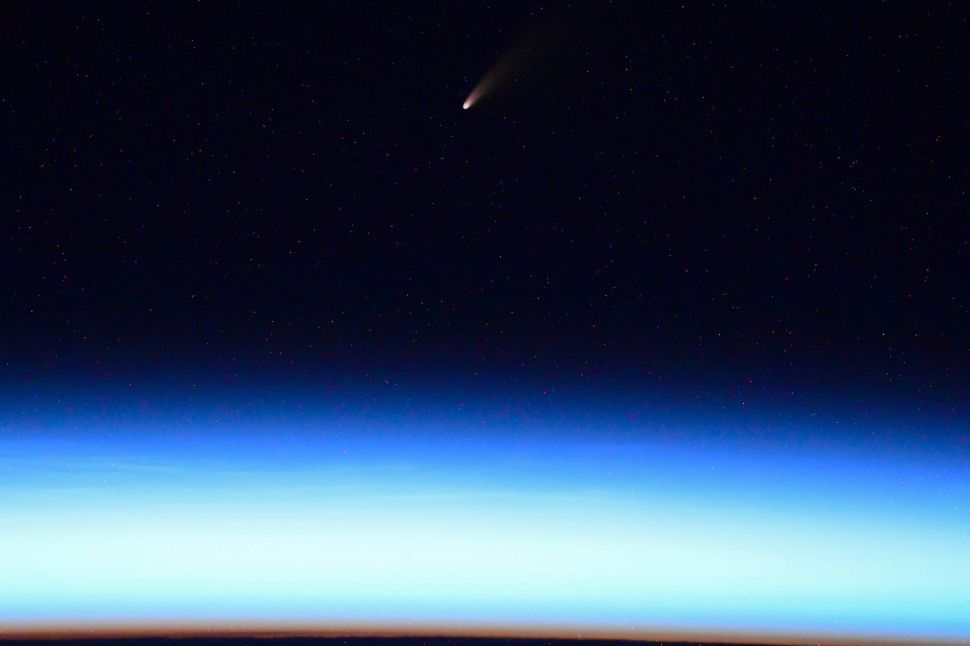
Look up! A rare naked-eye comet, C/2020 F3 (NEOWISE), is now visible to the unaided eye. But act fast – this celestial treat won’t last long.
Continue reading “Finally! We’ve got a comet that’s visible to the unaided eye. Comet C/2020 F3 NEOWISE”What You Can See in the Sky While Waiting for Fireworks on The 4th Of July
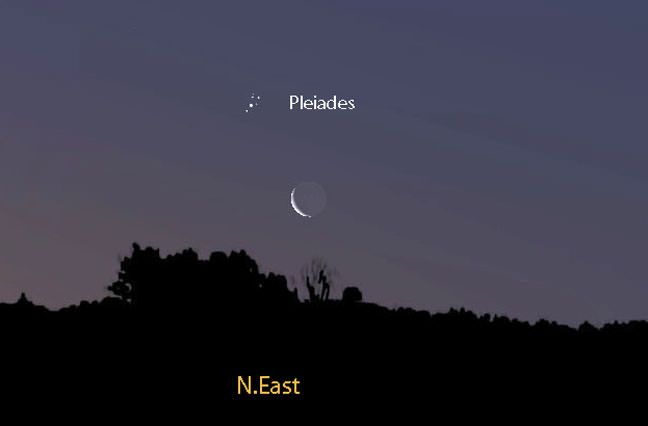
The sky can be a showy stage with big-time events like eclipses, meteor showers and the occasional bright comet, but most nights have a quiet beauty that whispers instead of shouts. The contrast between hype and hush is no more apparent than on the 4th of July – American independence day celebration – when we gather at a park or hilltop to watch the fireworks boom and flash across the heavens.
But there are other interesting things — some quiet fireworks — you can see in the sky to see while you are waiting for the holiday fireworks.
You can watch a less flashy but equally satisfying July 4th event as soon as tomorrow morning about the time the first bird lifts its voice at dawn. Look northeast to find a thin crescent moon dangling below the Seven Sisters star cluster. Also called the Pleiades, the cluster is a highlight of the winter evening sky. Though it seems out of place now at the height of summer, the Sisters remind us that nothing stands still. With the solstice behind us, winter’s already buckling his boots.
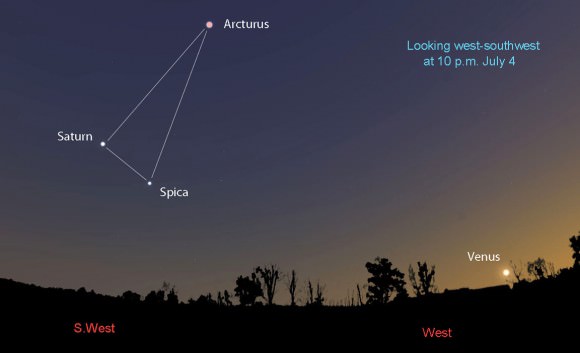
While you’re waiting for the show to begin tomorrow night, take a look around the twilight sky and see how many celestial luminaries you can spot. If you’ve got kids in tow, share the view with them, too.
The brightest natural object in the sky will be Venus, glimmering low above the western horizon. Much further up in the southwest, look for a tall, skinny triangle outlined by orangy Arcturus, highest of the three, along with Saturn and Spica.
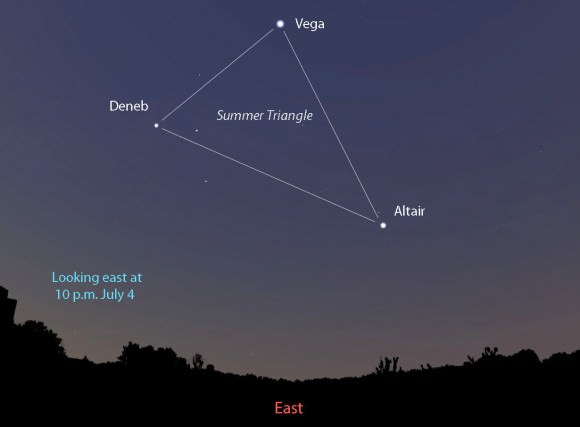
Twist around to face east to find another triangle, this one named after the summer season. Halfway up is Vega, the 5th brightest star in the sky, shining white and bright as burning magnesium. Below it you’ll spot the other Summer Triangle members, Altair in Aquila the Eagle and Deneb in Cygnus the Swan better known as the Northern Cross.
These bright stars and two planets coalesced from gas and dust millions to billions of years ago. Much has happened beneath their gaze, from the first stirrings of humankind to the crackle and boom of fireworks on a starry evening.
Rare Spectacular Triple Planet Conjunction Wows World! – Astrophoto Gallery
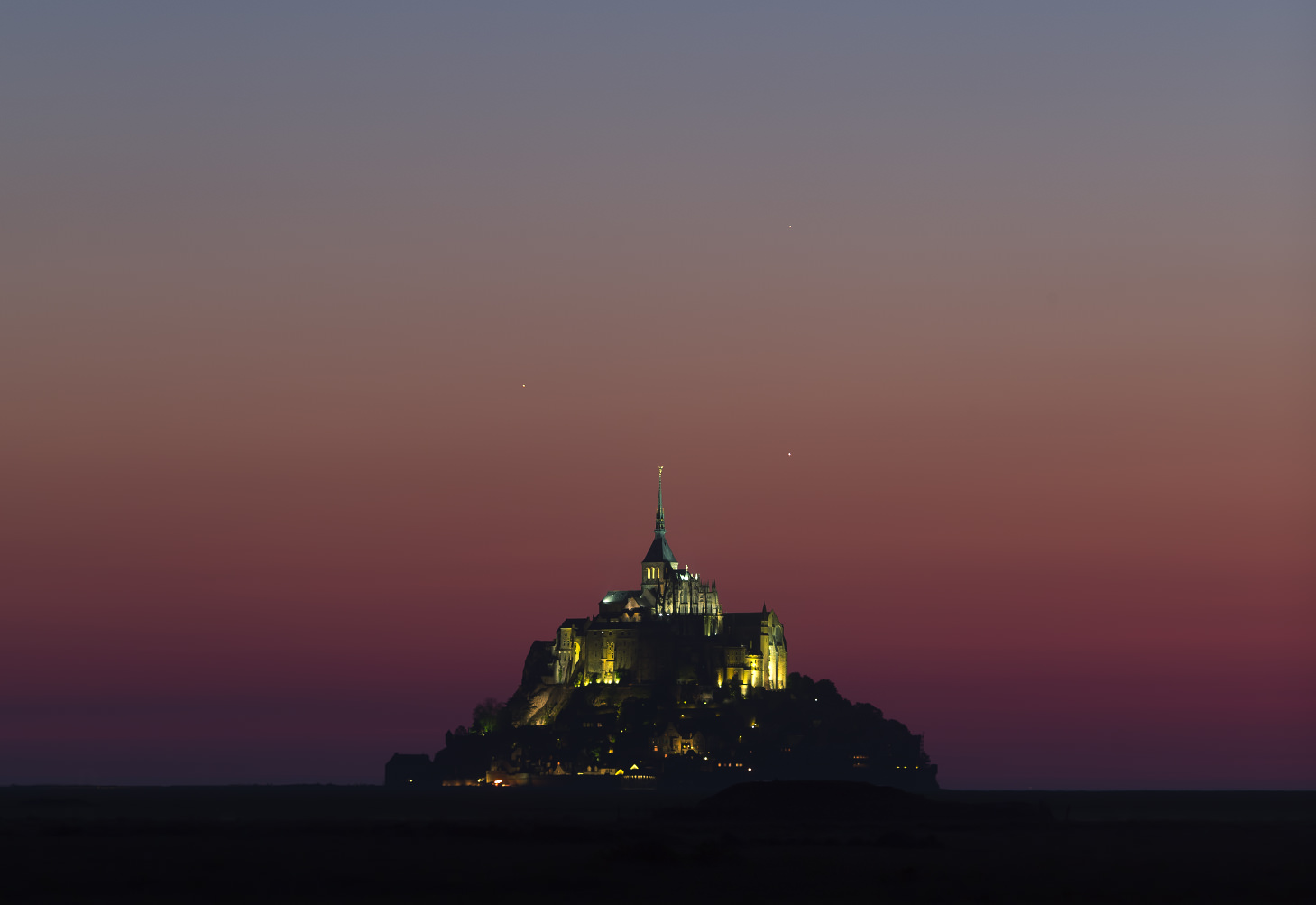
Triple planets (Venus/Jupiter/Mercury) conjunction over Mont-Saint-Michel, Normandy, France on May 26. Credit: Thierry Legault –
www.astrophoto.fr
Update: See expanded Conjunction astrophoto gallery below[/caption]
The rare astronomical coincidence of a spectacular triangular triple conjunction of 3 bright planets happening right now is certainly wowing the entire World of Earthlings! That is if our gallery of astrophotos assembled here is any indication.
Right at sunset, our Solar System’s two brightest planets – Venus and Jupiter – as well as the sun’s closest planet Mercury are very closely aligned for about a week in late May 2013 – starting several days ago and continuing throughout this week.
And, for an extra special bonus – did you know that a pair of spacecraft from Earth are orbiting two of those planets?
Have you seen it yet ?
Well you’re are in for a celestial treat. The conjunction is visible to the naked eye – look West to Northwest shortly after sunset. No telescopes or binoculars needed.
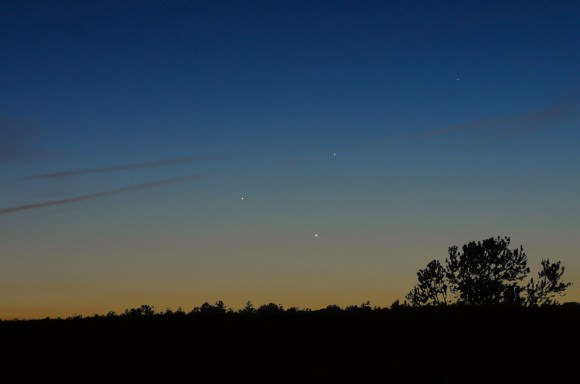
Just check out our Universe Today collection of newly snapped astrophoto’s and videos sent to Nancy and Ken by stargazing enthusiasts from across the globe. See an earlier gallery – here.
Throughout May, the trio of wandering planets have been gradually gathering closer and closer.
On May 26 and 27, Venus, Jupiter and Mercury appear just 3 degrees apart as a spectacular triangularly shaped object in the sunset skies – which
adds a palatial pallet of splendid hues not possible at higher elevations.
And don’t dawdle if you want to see this celestial feast. The best times are 30 to 60 minutes after sunset – because thereafter they’ll disappear below the horizon.
The sky show will continue into late May as the planets alignment changes every day.
On May 28, Venus and Jupiter close in to within just 1 degree.
And on May 30 & 31, Venus, Jupiter and Mercury will form an imaginary line in the sky.
Triple planetary conjunctions are a rather rare occurrence. The last one took place in May 2011. And we won’t see another one until October 2015.
Indeed the wandering trio are also currently the three brightest planets visible. Venus is about magnitude minus 4, Jupiter is about minus 2.
While you’re enjoying the fantastic view, ponder this: The three planets are also joined by two orbiting spacecraft from humanity. NASA’s MESSENGER is orbiting Mercury. ESA’s Venus Express is orbiting Venus. And NASA’s Juno spacecraft is on a long looping trajectory to Jupiter.
Send Ken you conjunction photos to post here.
And don’t forget to “Send Your Name to Mars” aboard NASA’s MAVEN orbiter- details here. Deadline: July 1, 2013
…………….
Learn more about Conjunctions, Mars, Curiosity, Opportunity, MAVEN, LADEE and NASA missions at Ken’s upcoming lecture presentations:
June 4: “Send your Name to Mars” and “CIBER Astro Sat, LADEE Lunar & Antares Rocket Launches from Virginia”; Rodeway Inn, Chincoteague, VA, 8:30 PM
June 11: “Send your Name to Mars” and “LADEE Lunar & Antares Rocket Launches from Virginia”; NJ State Museum Planetarium and Amateur Astronomers Association of Princeton (AAAP), Trenton, NJ, 730 PM.
June 12: “Send your Name to Mars” and “LADEE Lunar & Antares Rocket Launches from Virginia”; Franklin Institute and Rittenhouse Astronomical Society, Philadelphia, PA, 8 PM.
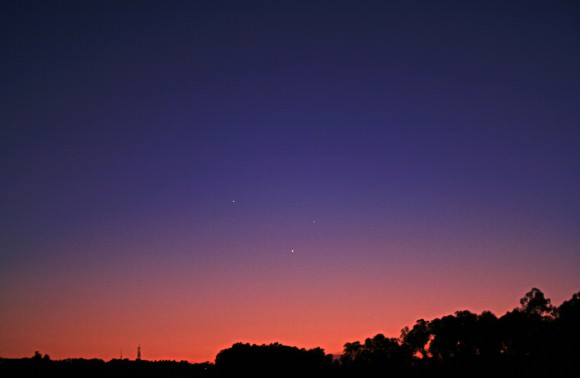
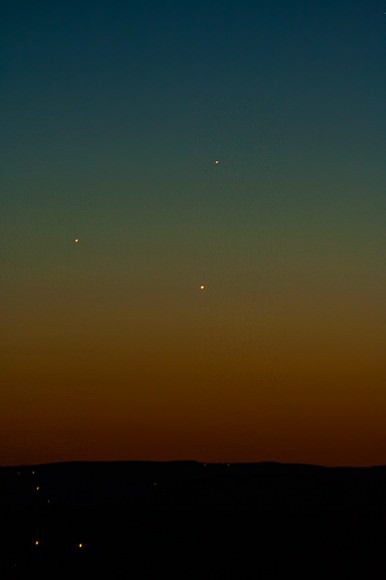
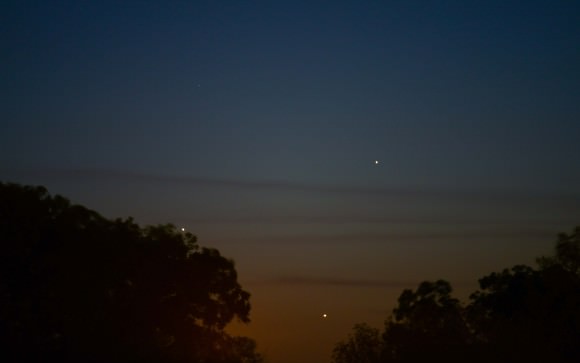
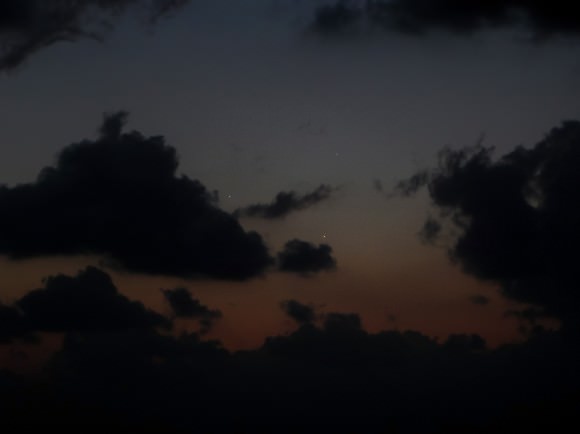
Caption: Taken on 2013-05-23 from Salem, Missouri. Canon T1i, Nikkor 105mm lens. 297 1/4s at 1s interval. Images assembled by QuickTime Pro. Credit: Joseph Shuster
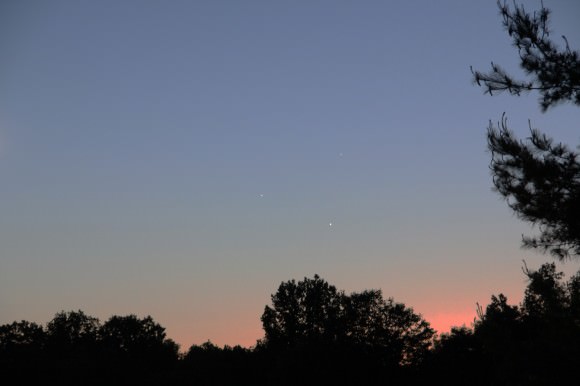
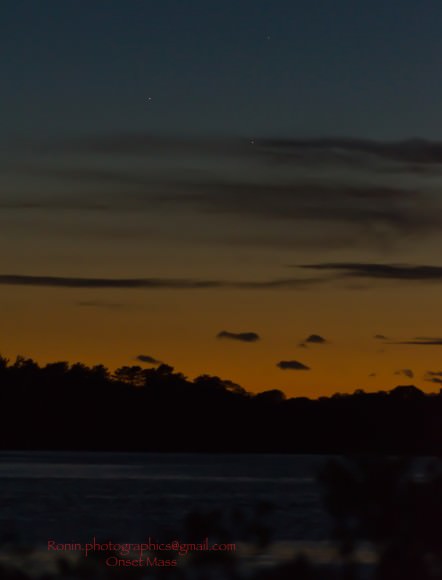

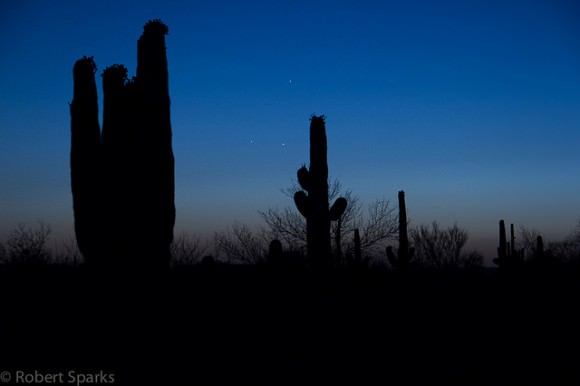
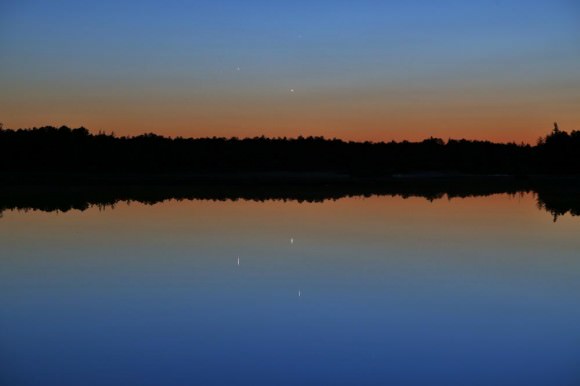
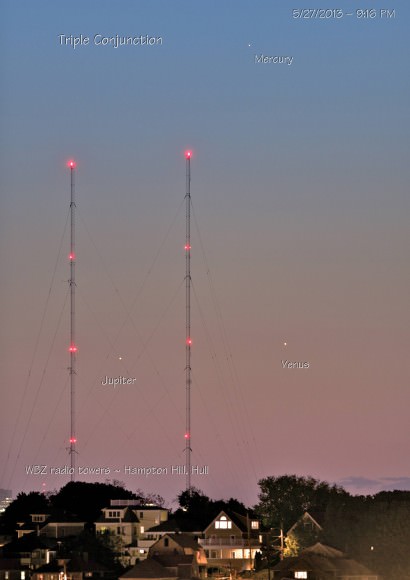
British TV Audience Discovers Potential New Planet
[/caption]
A public “mass participation” push initiated on a UK television program to find planets beyond our Solar System has had an immediate result! On Monday, January 16, 2012 “BBC Stargazing LIVE” began its first of three nights of television programs live from Jodrell Bank Observatory in the UK. The series was hosted by Professor Brian Cox, comedian Dara O’Briain along with a number of other well known TV personalities, astronomers and scientists. There was even a guest appearance via satellite link from Captain Gene Cernan, the last man on the Moon.
As well as the main TV program, there were numerous local events across the UK and the viewers could “mass participate” in activities such as looking for extra solar planets with the citizen science project, Planethunters.org.
The website hosts data gathered by NASA’s Kepler space telescope, and asks volunteers to sift the information for anything unusual that might have been missed in a computer search. People are especially adept at seeing things that computers do not and the BBC Stargazing Live event was a golden opportunity to get many people looking. During the event, over a million classifications were made and 34 candidate planets found on the website in 48 hours.
On the last show of the series on Wednesday 18th January it was announced, that in particular, one planet candidate looks extremely promising, as it has been identified multiple times by PlanetHunter participants.
The planet is circling the star SPH10066540 and is described as being similar in size to Neptune, circles its parent every 90 days and is about a similar distance from its parent star as Mercury is from our Sun. It could be described as a hot Neptune.
Chris Holmes from Peterborough UK and Lee Threapleton also from the UK found the planet by searching through time-lapsed images of stars looking for the periodic dips in brightness that result every time a planet passes in front of (transits) one of those stars.
A transit has to be observed several times before a planet will be confirmed. For the orange dwarf star SPH10066540, five such events have now been seen in the Kepler data making it a strong candidate for an extra solar planet.
“There’s more work to be done to confirm whether these candidates are true planets,” wrote the PlanetHunters team on their blog, “in particular, we need to talk to our friends on the Kepler team – but we’re on our way.”
The NASA Kepler space telescope, launched in 2009, has been searching a part of space thought to have many stars similar to our own Sun.
You can try and find a new planet too by visiting planethunters.org it is incredibly simple and easy to do and requires no previous knowledge of astronomy.
How many more planets will be discovered?

